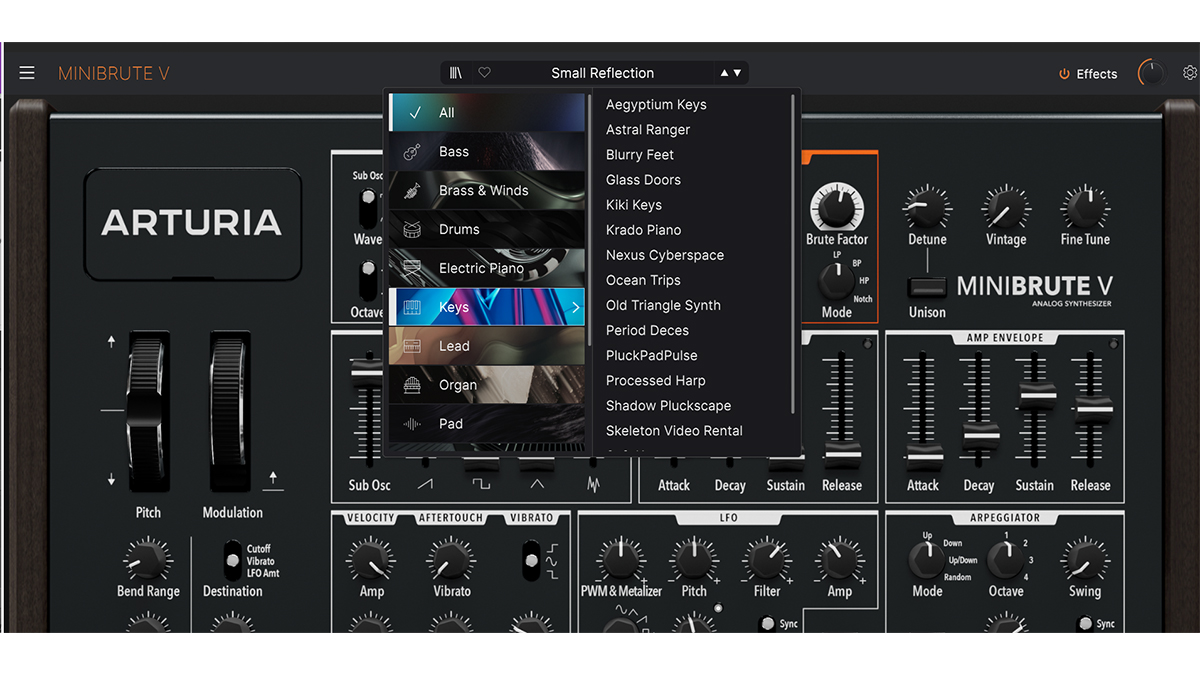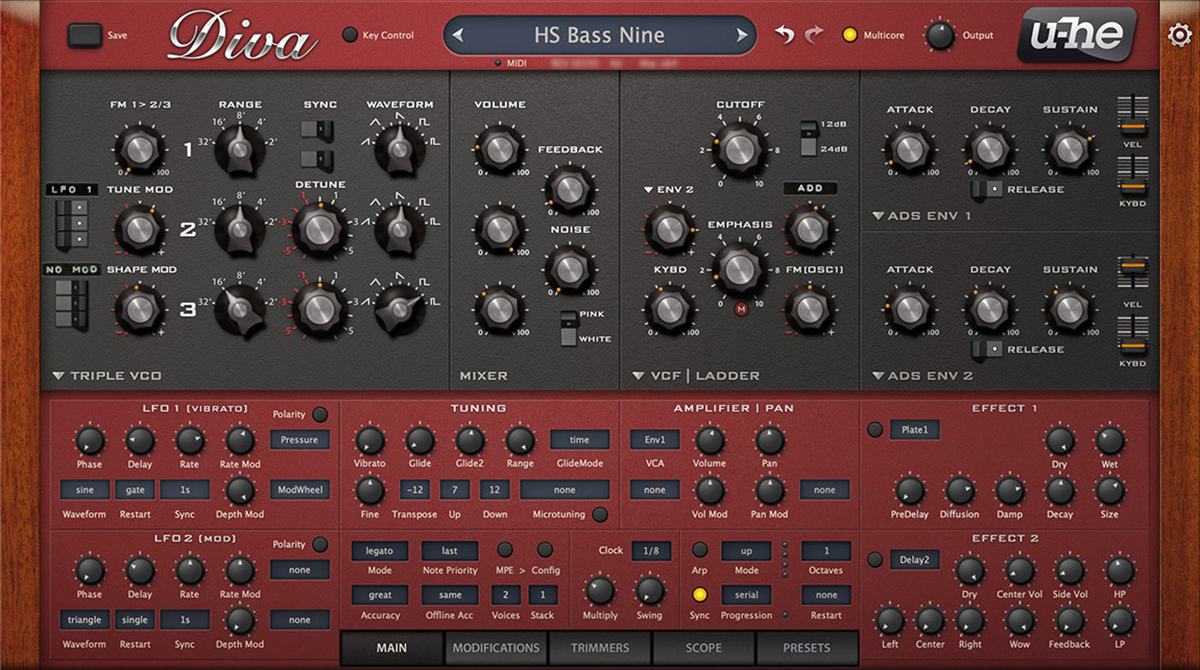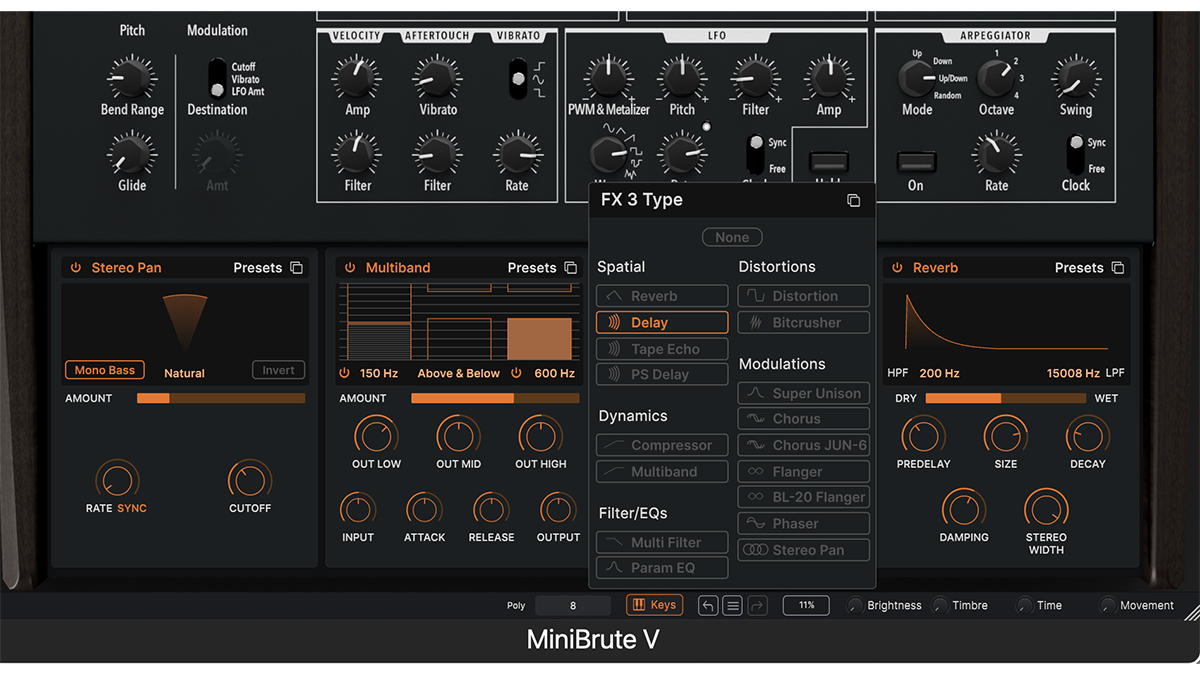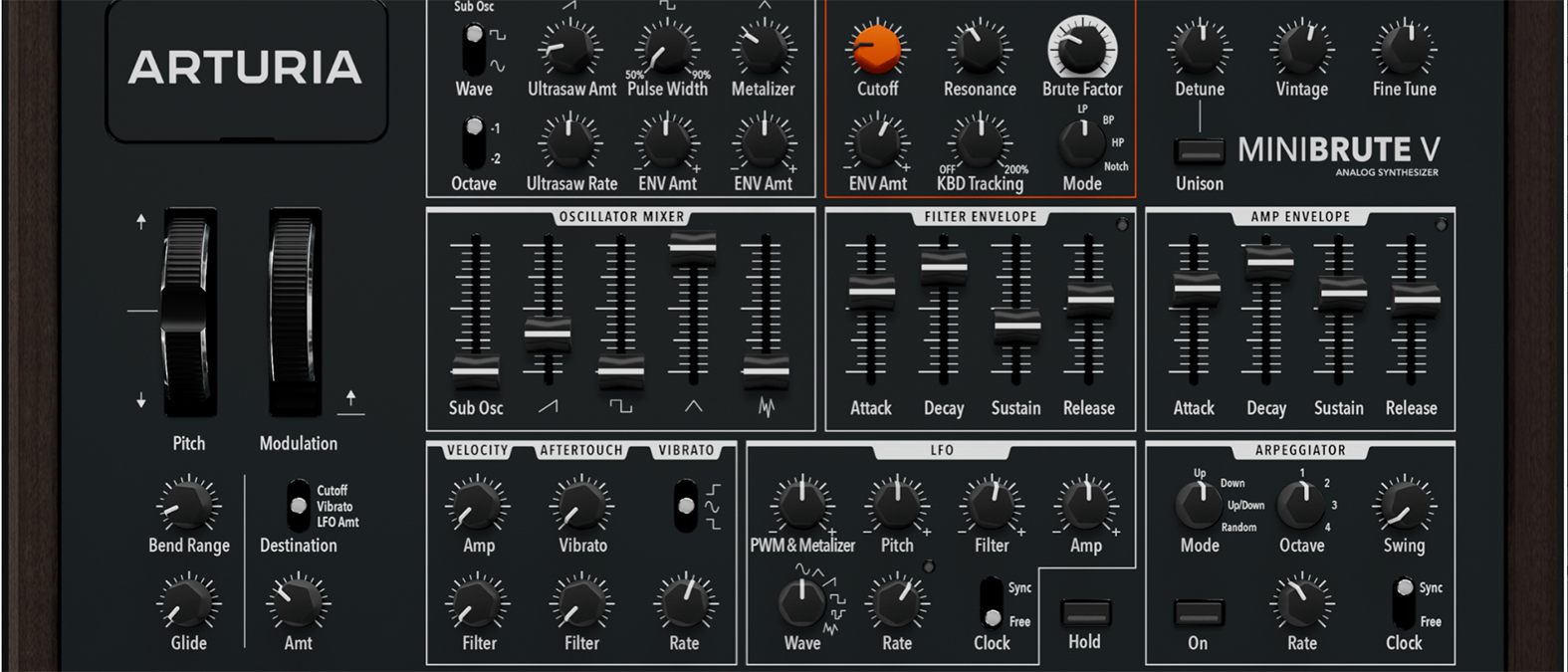MusicRadar Verdict
MiniBrute V is now more PolyBrute and can take you to some very different places compared to the original. Sounds fab either way, though, but is pricey.
Pros
- +
Lovely analogue sound.
- +
Much more flexible (and polyphonic) than the original.
- +
Great effects.
- +
Very easy to use and program.
- +
Like the extra oscillator parameters.
Cons
- -
Expensive (but currently on sale).
MusicRadar's got your back
Arturia MiniBrute V: What is it?
Mac OS 11+
Windows 10+. (64-bit)
Formats: Standalone, VST, AAX, Audio Unit, NKS (64-bit DAWs only)
Buy from Plugin Boutique
If you think too hard about Arturia’s history of synth design, it’s enough to make your head spin. The company started out developing software synth emulations of classic synths (25 years ago, believe it or not!), then developed its own range of hardware synths, and now regularly brings out software emulations of these synths. All we need now is Pigments in hardware and some kind of synth circle will be complete!
Anyway, the original MiniBrute analogue synth was the company’s first foray into the world of analogue hardware back in 2012, and that synth, along with Novation’s BassStation 2 and Korg’s Volca range, should probably be given a large slice of the credit as key players that heralded the return of true analogue synthesis that we enjoy today.
But now MiniBrute has gone digital – albeit very ‘analogue’ digital – and a virtual version can be yours, for (quite) a price.

Arturia MiniBrute V: Performance and verdict
The first incarnation of the MiniBrute hardware synth was often compared to an original Roland SH-101, but was a lot more than that thanks to its fully-featured single oscillator, which is present and correct in MiniBrute V. You get a mixer to blend sawtooth, square and triangle waveforms, noise and an extra sub oscillator. But the big character definer on the original is that each waveform has extra options. So the sawtooth has UltraSaw parameters for bendy, supersaw style sounds; the triangle has a Metalizer option to really gnarl up the sound; and the square has pulse width modulated by the filter envelope.
While MiniBrute V features all of these, it lacks the audio input of the original. What it does have over the hardware, though, is polyphony – eight voices to be precise (although of course, you could stack up multiple versions on different tracks for more, if you wish). There are also effects, with four slots available and various effects to choose from – see below for more on these. A Unison mode, top right of the UI, also really helps beef up sounds when you ladle on some detuning.

• u-he Diva
If you want virtual analogue they (still) don’t come much better than this u-he classic.
• Baby Audio BA-1
A more recent dusty and gnarly emulation of a vintage analogue.
The modulation is where the synth comes alive, especially with the option to modulate some extra waveform parameters. This comes by way of the simple LFO, which can be set to one of six waveforms (with Rate and Clock options) to control the PWM and Metalizer, plus the overall Pitch, Filter and Amp values.
Other notable controls include Brute Factor. This controls the gain in a feedback loop within MiniBrute’s great-sounding Steiner-Parker multimode filter and introduces anything from subtle warmth to distorted aggression. There’s also a Vintage knob whose effect is dependent on other settings but is designed to bring in old-school variances, although it can be ineffective. A decent arpeggiator with four modes finishes our tour.
Want all the hottest music and gear news, reviews, deals, features and more, direct to your inbox? Sign up here.
As to the sound, the 168 presets cover a wide range, from the usual arpeggiations and in your face basses to many more pads than the original could possibly muster. Overall it sounds terrific and the simple interface is fun to get to grips with, and will have you producing many more great sounds.

The extra effects
Arturia knows a thing or two about effects, make no mistake – just check out the company’s FX Collection 4, doing what V Collection does for vintage keyboards. So there was clearly plenty of effects expertise to ladle into MiniBrute V, and it’s all the better for it.
You get four slots, each with 17 effects to choose from over Spatial, Dynamics, Filter/EQs, Distortions, and Modulations categories. Each effect comes with a decent number of individual parameters to tweak, but also a useful visual aid, whether that be to indicate tape delays, frequency bands, or even the width of a stereo pan.
The FX sound large and dramatic too – the reverb, for example, taking your sounds to another world entirely when pushed. These obviously weren’t a feature on the original hardware so make MiniBrute V a very different sounding synth, and a very flexible one at that.
Is Mini a Maxi?
As is so often the case, software developers can’t help add in those extras when they emulate hardware – it is the beauty of software after all. But then you have to ask how many extras can you add before it becomes a new synth and, really, that’s what MiniBrute V is; with the polyphony and effects it has effectively ‘crossed the line’ into all-new polyphonic Brute territory. Yes you can use it in mono mode and switch off the effects if you want to get ‘real’, but that would be a little like using just three strings on a guitar (possibly).
So while MiniBrute V is the solution if you’ve yearned for a MiniBrute in software, it becomes more appealing when you consider it ‘just’ as a great sounding and very characterful virtual analogue polysynth, with enough snarl, gnarl and bite to make it stand out from the VA crowd. It’s a brute, yes, but maybe call it a poly brute.
MusicRadar verdict: MiniBrute V is now more PolyBrute and can take you to some very different places compared to the original. Sounds fab either way, though, but is pricey.
Arturia MiniBrute V: The web says
"MiniBrute V delivers a unique and individual-sounding single oscillator synth with some sensible and, most importantly, useful extras."
Gearnews
Arturia MiniBrute V: Hands-on demos
Arturia
Molten Music Technology
CatSynth TV
Emlyn In The Mix
DKS SYNTH LAB
Arturia MiniBrute V: Specifications
- Mac OS 11+.
- Windows 10+. (64-bit).
- Formats: Standalone, VST, AAX, Audio Unit, NKS (64-bit DAWs only).
- CONTACT: Arturia
Andy has been writing about music production and technology for 30 years having started out on Music Technology magazine back in 1992. He has edited the magazines Future Music, Keyboard Review, MusicTech and Computer Music, which he helped launch back in 1998. He owns way too many synthesizers.






